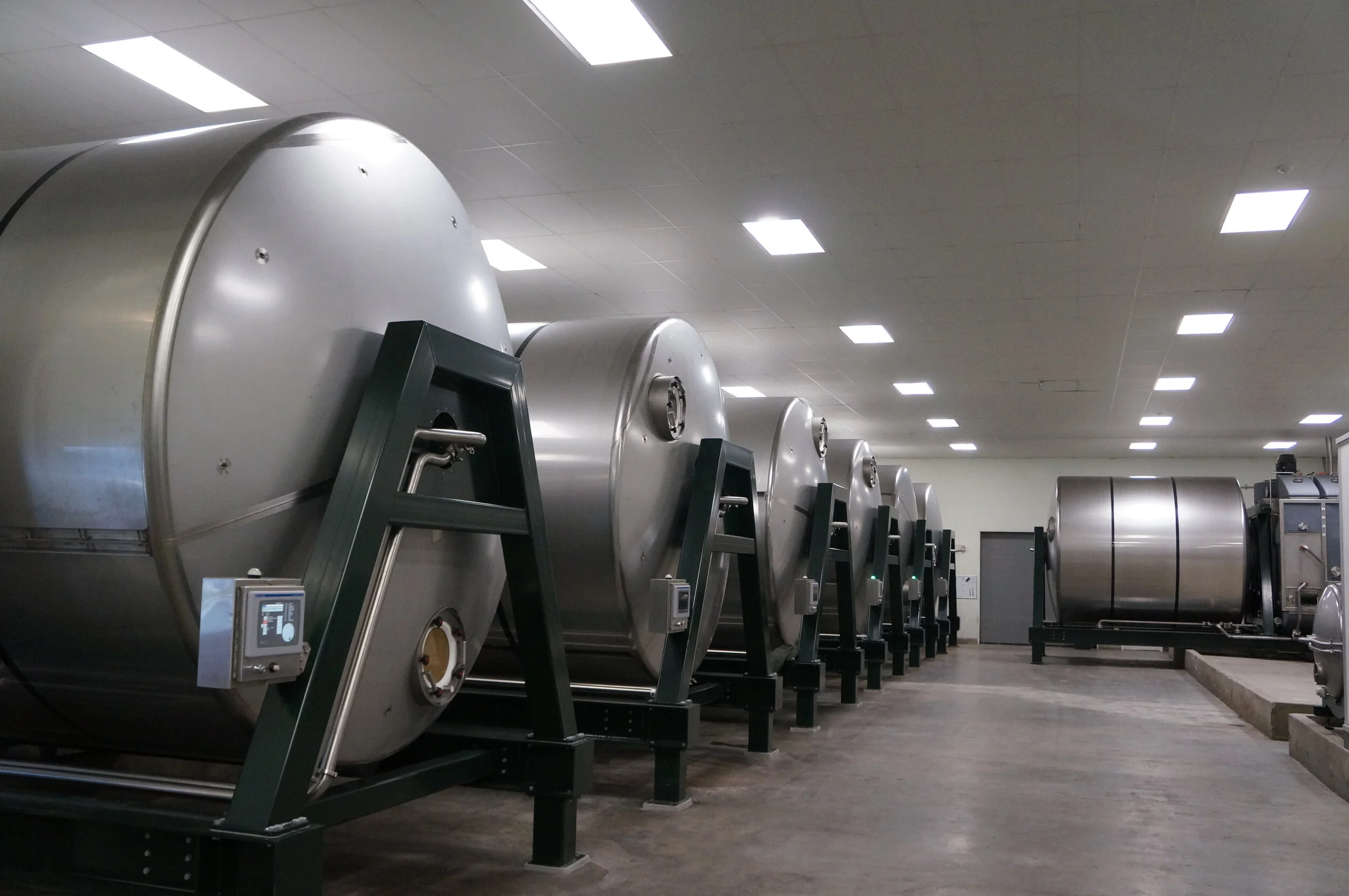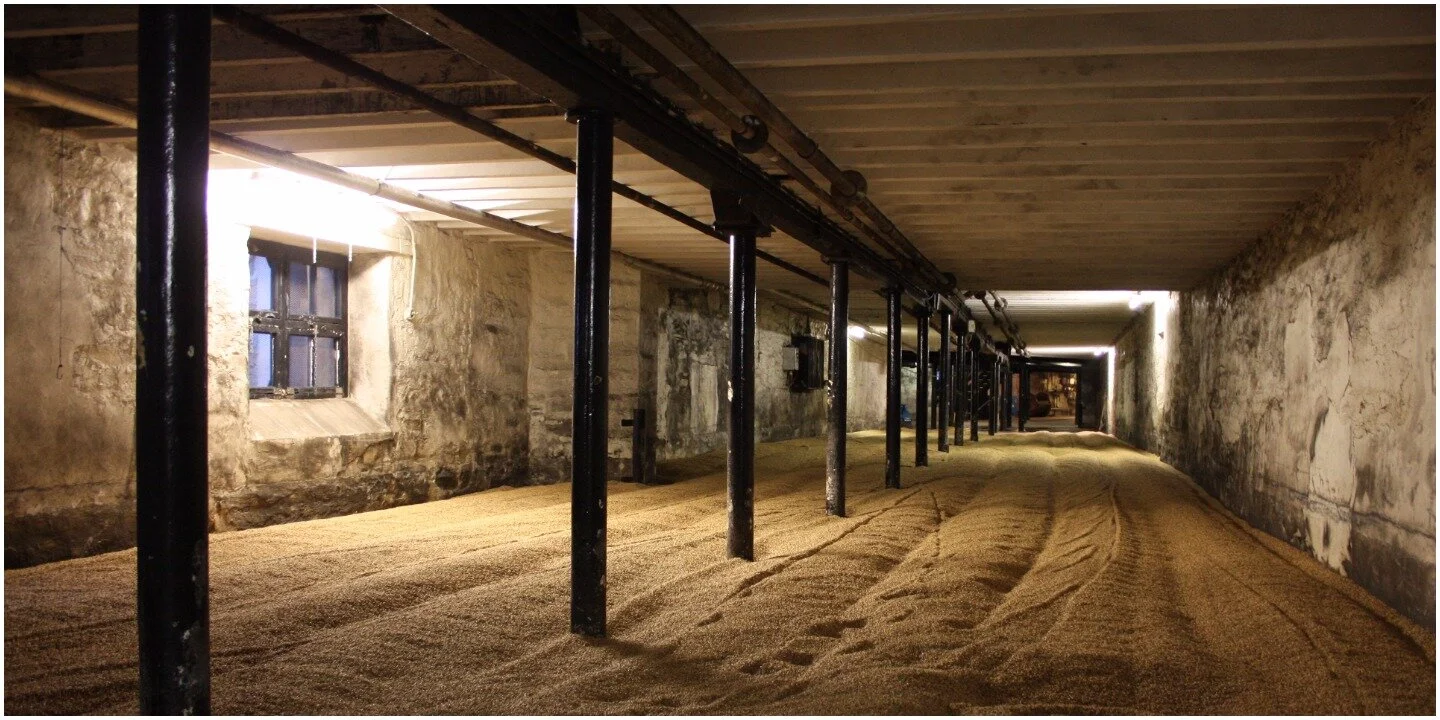Malting Machinery
Every malthouse makes malt differently. Machinery, growing region, water, variety of grain, terroir, the philosophy of the maltsters - all of these factors and more contribute to malt flavor. At Skagit Valley Malting, we are dedicated to making the best malt possible, and we have one of the best growing regions and some of the best malting equipment to realize our goal.
There are three relatively simple steps in malting, steeping, germination and kilning, but any malthouse will tell you there are numerous supporting steps that take place in order to ensure a great malt. The methods differ, but the goals are the same, high-quality finished products that are replicable and repeatable.
Three Malting Methods
Floor Malting
Floor malting operation
The history of beer and malting are inseparable. The malting process has basically always been three steps, get the grain wet to start germination, let the grain germinate and modify and lastly dry it out for storage and to develop flavor and color. Early malting was non-pneumatic, once grain was steeped and began germinating it was transferred to a concrete floor where it was spread out at a depth of about six inches. Maltsters would then manually rotate and move the grain in order to stop the rootlets from clumping together, dissipate C02, minimize drying, and control the temperature. Germination in these early malthouses could last up to ten days, double the time it takes modern malthouses to germinate grain. These germination rooms were well ventilated with fresh air flowing above the grain, but the benefits of pushing air through the germinating grain bed, i.e. pneumatic malting, were not realized until the late 1800s. The final step was to dry the grain out and develop color and flavor in the kilns. Floor malting is rarely used today, but there are still malthouses that practice this method. Some brewers and distillers believe floor malt creates a more complex and flavorful malt, and it is therefore often used in the production of traditional beers.
The Saladin Box
Loading a Saladin Box with steeped grain
One of the biggest advancements in malting was the invention of the Saladin box in the late 1800s. A Saladin box is a rectangular container with a series of augers or ribbon screws that travel the length of the container rotating and moving the germinating grain. Moving augers were a huge innovation in malting; this new system essentially eliminated one of the maltster’s most time-consuming responsibilities, shoveling or raking and rotating the grain every eight hours. Moving grain around is crucial in malting for several reasons. First, it keeps the rootlets from tangling and clumping the grain together; it releases carbon dioxide; and lastly, it helps control the temperature of the germinating grain. With the Saladin box, also came pneumatic malting, where cool air is forced through the grain bed during germination. This new process helped remove C02 from the germinating grain and replaced it with fresh oxygen, this resulted in significantly shorter and more efficient germination. Once germination is complete, the green malt heads to kilns to become finished malt. The Saladin box made malting more efficient, the automated rakes allowed for a deeper grain bed so there was more grain in less space, and it eliminated the manual labor of raking germinating grain.
Drum Malting
Kaspar Schulz Drum Malting System
Drum malting is a two-step process. First, steep the grains in a static steeping tank in order to start germination. Next, transfer the germinating grain to a germination/kilning drum, where the grain germinates for several days. Once the grain has modified, the maltster will then turn on the heat and begin kilning; the heat stops germination and then develops the color and flavor of the malt.
Skagit Valley Malting falls under the category of drum malting, but our equipment is one of a kind and consolidates all the malting steps into a single system. So when we begin the malting process, we load raw barley into a vessel that will house the grain for 8-10 days, and the grain will not leave until it is polished, clean, and ready for brewing.
How Does Skagit Valley Malting Produce Malt?
The first step is to prepare the barley in storage for malting. This involves pulling the grain from a silo in order to send it through our cleaning system to produce “malt ready” grain. First, the grain travels through a debearder where we remove the awns that protrude from the top of the grain. Most of the awns are already removed during harvest, but we want to make sure none remain or clog any of the cleaning equipment. Next, the grain falls through an indent. This removes any cracked kernels because cracked kernels don't malt and make for less uniform, consistent, and efficient malt. The barley travels through the Q Sage, which is our grain sorting system. The grain falls through several layers of shaking screens. We sort out the “oversized” grain; next, we sort out the grain that is perfect for malting; and lastly, we remove the “smalls,” which will become animal feed.
The malt ready grain then makes its way to the malting machines where it is loaded into the vessel. Each vessel holds 10 tons of raw barley and produces a little over 8 tons of finished malt. First, we begin steeping the grain to hydrate it for germination; this also cleans the grain and removes dust and dirt. A big difference in our steeping process is that we do not use a static steeping tank. Instead of steeping grain in a static tank where the grain is completely submerged in the water we rotate a vessel and coat the grain with water. This process uses far less water and allows us to achieve consistent germination throughout the grain body. Unlike other malting methods, we never set a grain bed; we constantly rotate our vessel which keeps the grain from clumping, releases C02, and controls temperature. We are also able to force fresh air throughout our grain bed very efficiently, keeping the grain healthy during germination. Lastly, after germination, we begin kilning the grain, and then we polish the grain by rotating the vessel faster and increasing the airflow which knocks off the rootlets and removes them from the grain.
When you use malt from Skagit Valley Malting, you know the grain was treated with the utmost attention from the field to the brewhouse. By using a single vessel, the grain isn’t over handled or transferred during its most delicate stage, germination, when it is most vulnerable to damage. Our malting technology creates uniquely consistent and uniform malt, benefits you will notice and taste in the brewhouse and in your beer.




